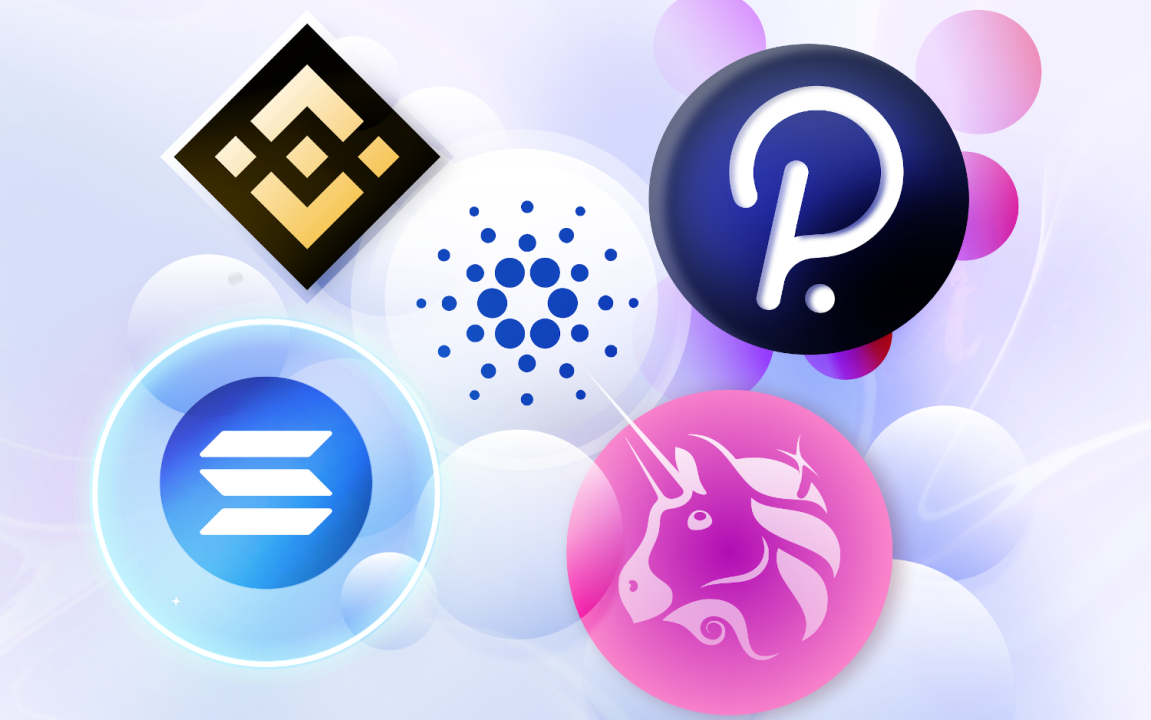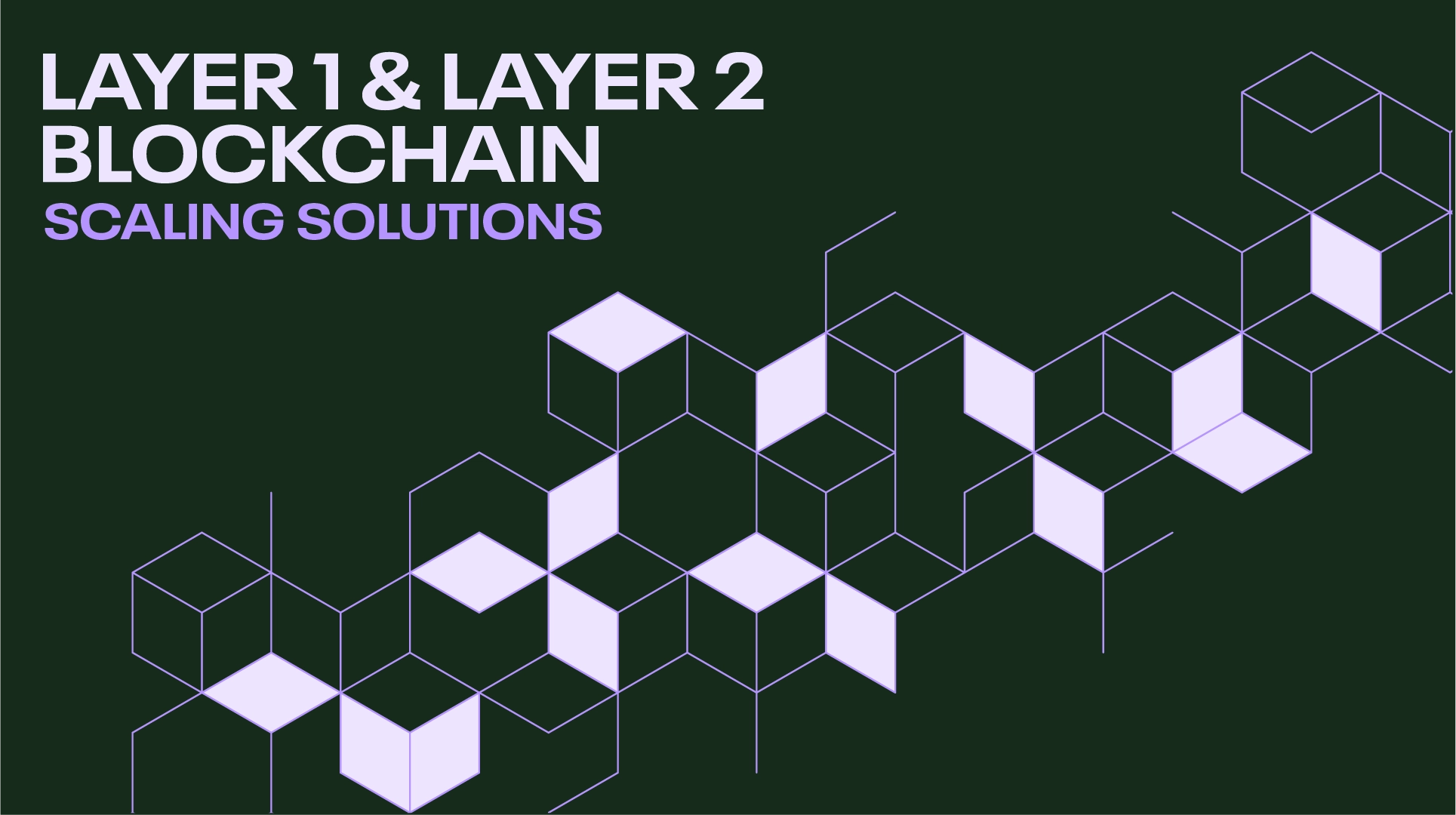10 Staggering Altcoin Scalability Solutions For Explosive Growth
Unlocking Potential - Discover altcoin scalability solutions for Next-Level Growth. Explore innovative strategies to boost your altcoin's scalability and meet market demands effectively.
Author:James PierceReviewer:Camilo WoodMar 06, 202415 Shares14.9K Views

In the ever-evolving landscape of cryptocurrency, Altcoin scalability solutionsremains a paramount concern for altcoin enthusiasts and investors alike. As blockchain networks continue to grow in popularity and adoption, the need for efficient scalability solutions becomes increasingly pressing.
These groundbreaking solutions promise to revolutionize the altcoin ecosystem, facilitating faster transactions, lower fees, and greater network throughput. Whether it's optimizing consensus mechanisms, implementing off-chain scaling techniques, or exploring interoperability solutions, the quest for scalability is driving unprecedented innovation in the world of cryptocurrencies.
10 Effective Solutions
In the fast-paced world of cryptocurrency, scalability reigns supreme. As altcoins vie for market dominance, the ability to scale efficiently is critical for sustained growth and widespread adoption. To navigate this challenge, we present 10 must-try altcoin scalability solutions that promise to propel your digital assets to new heights.
1. Sharding
Sharding involves partitioning the blockchain network into smaller sections called shards, allowing transactions to be processed in parallel. Ethereum 2.0 is implementing sharding to improve scalability and reduce congestion on the network.
2. Layer 2 Solutions (e.g., Lightning Network)
Layer 2 solutions build on top of existing blockchains to handle transactions off-chain, reducing the burden on the main blockchain. The Lightning Network is a layer 2 solution for Bitcoin, enabling instant, low-cost transactions by creating payment channels between users.
3. Directed Acyclic Graphs (DAGs) (e.g., IOTA)
DAG-based cryptocurrencies utilize a structure where each transaction verifies two previous transactions, allowing for high throughput and scalability. IOTA is a prominent example of a DAG-based cryptocurrency designed for the Internet of Things (IoT) applications.
4. Proof Of Stake (PoS) (e.g., Cardano)
PoS consensus mechanisms replace energy-intensive mining with a system where validators are chosen to create new blocks based on the number of coins they hold and are willing to "stake" as collateral. Cardano is a blockchain platform using a PoS consensus mechanism to achieve scalability and sustainability.
5. Sidechains (e.g., RSK)
Sidechains are independent blockchains that are interoperable with a main blockchain, allowing for the execution of smart contracts and transactions without overburdening the main chain. RSK (Rootstock)is a sidechain platform for Bitcoin that enables smart contract functionality.
6. Plasma
Plasma is a framework for creating scalable and secure decentralized applications (dApps) on Ethereum. It works by creating hierarchical tree structures of sidechains, each capable of handling a high volume of transactions. OmiseGO is a project utilizing Plasma for scalable financial transactions.
7. State Channels (e.g., Raiden Network)
State channels enable off-chain, trustless interactions between users by opening a secure channel where multiple transactions can occur before being settled on the main blockchain. Raiden Network is a scaling solution for Ethereum based on state channels.
8. Interoperability Protocols (e.g., Cosmos)
Interoperability protocols allow different blockchains to communicate and transfer assets seamlessly, improving scalability by distributing transactions across multiple chains. Cosmos is a project that aims to create an "Internet of Blockchains" by facilitating interoperability between various blockchain networks.
9. Distributed Hash Tables (DHT)
DHTs distribute data across multiple nodes in a network, enabling efficient data storage and retrieval without relying on a centralized server. Holochain is a platform utilizing DHT technology for decentralized application development and scalability.
10. Optimistic Rollups
Optimistic rollups are layer 2 scaling solutions that bundle multiple transactions into a single transaction, reducing the burden on the main chain while still ensuring security through a process of optimistic validation. Synthetixis a decentralized finance (DeFi) platform implementing optimistic rollups for scalability.
Why Is Scalability A Challenge For Altcoins?
Scalability is a significant challenge for altcoins (alternative cryptocurrencies) for several reasons:
1. Limited block size -Most blockchains, including those used by altcoins, have a limited block size, essentially restricting the number of transactions that can be processed per unit of time. As the number of users and transactions increases, this limit can create congestion, leading to:
- Slow transaction processing - ransactions can take longer to confirm, impacting user experience and potentially hindering adoption.
- High transaction fees - Increased competition for limited space within a block drives up transaction fees, making smaller transactions impractical.
- Network instability -Congestion can strain the network, increasing the risk of delays, errors, and even potential forks.
2. Security vs. Scalability Trade-off -Many blockchain security principles inherently limit scalability. For example:
- Decentralization -Maintaining a decentralized network, where every node verifies every transaction, requires significant computational power, slowing down processing.
- Proof-of-Work consensus -Many altcoins rely on Proof-of-Work (PoW) for consensus, which requires solving complex mathematical problems, contributing to processing limitations.
3. Competition and Innovation - The diverse landscape of altcoins, each with its own approach and design, can pose challenges for achieving widespread adoption and interoperability, further hindering scalability efforts.
4. Technical Complexity - Implementing new scalability solutions often involves complex technical changes to the underlying blockchain protocol, requiring significant development expertise and community consensus.
5. Regulatory Uncertainty -Evolving regulations and lack of clarity in how cryptocurrencies like altcoins should be treated can create hesitancy in adopting new, untested scalability solutions.
What Are Sharding Solutions?
In the realm of cryptocurrencies and blockchain technology, sharding solutions have emerged as promising strategies to tackle the ongoing challenge of scalability. Here's a breakdown of what they are and how they work:
The Scalability Challenge
Imagine a busy highway: it can only handle a certain amount of traffic before things slow down. Similarly, blockchains, especially those with limited block sizes like Bitcoin, can become congested as the number of users and transactions increase. This leads to:
- Slow transaction processing -Transactions take longer to confirm, frustrating users and hindering adoption.
- High transaction fees - Increased competition for limited space in a block drives up fees, making smaller transactions impractical.
- Network instability -Congestion can strain the network, increasing the risk of delays, errors, and even forks.
How Sharding Works?
Sharding essentially involves dividing the blockchain into smaller, more manageable partitions called shards. This analogy holds: imagine building additional lanes on the highway to ease congestion. Each shard operates independently, processing its own set of transactions simultaneously. This allows the overall network to handle a much higher volume of transactions without compromising security or decentralization.
Key Features Of Sharding
- Parallel processing -Transactions in different shards can be processed simultaneously, significantly increasing throughput.
- Reduced workload -Each shard handles a smaller portion of the overall network load, improving efficiency and scalability.
- Decentralization -Sharding can maintain decentralization if designed correctly, with multiple validators responsible for each shard.
Examples Of Sharded Blockchains
- Ethereum 2.0- Implementing sharding as a central aspect of its upgrade to improve scalability.
- Zilliqa - Already implemented sharding, focusing on scalability and network performance.
- Near Protocol - Uses a sharded architecture designed for high-speed transactions and smart contracts.
How Do Lightning Network And Similar Off-chain Solutions Work?
Imagine rush hour traffic clogging the city streets. Blockchains sometimes face similar congestion, slowing down transactions and raising fees. Thankfully, solutions like the Lightning Network (LN)offer alternative routes to keep things flowing smoothly. Here's how it works:
Centralized Vs. Decentralized
Traditionally, every transaction must be broadcasted and validated on the entire blockchain, like waiting in line at a single toll booth. This ensures security but creates bottlenecks. Off-chain solutions, like LN, act as express laneswhere transactions can bypass the main blockchain for faster processing.
Opening The Channel
Think of LN channels as secure tunnels between two parties. To initiate, users deposit funds into a shared multi-signature wallet, ensuring both parties approve spending.
Micropayments Flow
Transactions occur off-chain within the channel, similar to exchanging cash directly with someone. This avoids waiting for blockchain confirmation, making payments near-instantaneous and significantly cheaper.
Closing The Loop
Eventually, the channel needs to be closed, updating the main blockchain with the final balance. This ensures everyone agrees on the transactions that occurred within the channel.
Similar Off-Chain Solutions
- Raiden Network - Designed for Ethereum, aims for high-throughput micropayments.
- Plasma -Enables custom sidechains to process specific transaction types efficiently.
- State Channels -Primarily used for direct micropayments between two parties.
Benefits Of Off-Chain Solutions
- Faster Transactions -Skipping the main blockchain significantly reduces processing time.
- Lower Fees -Eliminating network congestion means minimal transaction fees.
- Scalability - Handles more transactions without burdening the main blockchain.
Considerations And Challenges
- Limited Functionality -Not all functionalities available on the main chain are accessible within off-chain solutions.
- Security - While secure, the security model differs from the main blockchain, requiring trust in channel partners.
- Limited adoption - Still under development, adoption and interoperability with other solutions are evolving.
FAQ's About Altcoin Scalability Solutions
How Do Directed Acyclic Graphs (DAGs) Work For Scalability?
Unlike blockchains, transactions are arranged in a directed graph, enabling faster validation and potentially higher scalability. Examples include IOTA and Hedera Hashgraph.
Which Altcoins Are Currently Using These Scalability Solutions?
Many are still under development or in early implementation stages. Ethereum 2.0 and Zilliqa are notable examples with ongoing adoption.
What Are The Challenges Of Implementing These Solutions?
Technical complexity, security considerations, and potential trade-offs in decentralization or decentralization are some key challenges.
Conclusion
Altcoin scalability solutions represent the cornerstone of progress in the cryptocurrency landscape. As the demand for faster transactions, lower fees, and greater network capacity continues to surge, the exploration and implementation of innovative scalability solutions are imperative.
Furthermore, the pursuit of scalability is not merely a technical challenge but a fundamental catalyst for realizing the transformative potential of blockchain technology. As altcoin projects continue to innovate and collaborate, scalability solutions will drive forward progress, enabling decentralized ecosystems to thrive and empowering users with unparalleled access to financial services.

James Pierce
Author

Camilo Wood
Reviewer
Latest Articles
Popular Articles
